Calibration Supports Quality for Flexible, Competency-Based Systems
CompetencyWorks Blog
A shared understanding of learning expectations among educators, students, and communities is key to the success of competency-based education models. The process of calibration helps establish the common expectations essential for evaluating students based on what they know and can do, not just on having covered the curriculum over a set time period.
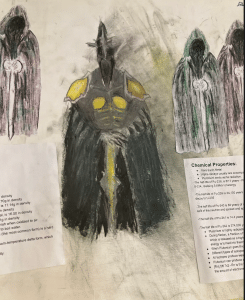
Last November, students, educators, researchers, and other stakeholders came together for a competency calibration experience at the annual Aurora Institute Symposium. In this session, educators brought authentic student work samples from their students to be reviewed, unpacked, and discussed in an effort to norm around expectations of performance on key skills and competencies. Together, we dug into samples of student work from a Dungeons & Dragons chemistry unit, work-based learning student reflections, and a variety of other learning artifacts.
Expanded Opportunities for Competency Development and Demonstration
In recent years increasing numbers of states, districts, and educators are adopting competency-based education frameworks that allow students to develop and demonstrate learning in ways that reflect real-world skills. One of the most exciting developments in this space is the growing recognition that competencies can be developed and demonstrated both inside and outside the classroom. This shift opens up new opportunities for students to link their academic learning with real-world contexts.
In Vermont’s Flexible Pathways initiative, students can gain credit for work-based learning experiences or community participation that aligns with key competencies. Students can showcase how they’ve applied their skills in internships, apprenticeships, volunteer work, or other community-based settings. This process not only validates their classroom-based learning but also empowers students to take charge of their education in ways that connect to their personal interests and future careers. Other examples include New Mexico’s Graduation Equity Initiative, which allows assessment approaches including portfolios and community-based capstone projects, and Washington’s eight pathways for students to choose from to demonstrate college and career readiness. On a local level, Massachusetts’ Chelsea Opportunity Academy’s Work to Credit Program provides flexible opportunities for students to earn credit by demonstrating competencies in a workplace setting.
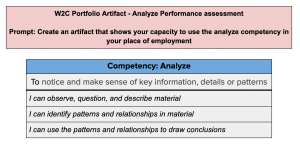
As pathways expand and competency-based education becomes more widespread, the types of products students use to demonstrate competency are diversifying. Students might create digital presentations, written reflections, or real-world projects that reflect an authentic understanding and application of the competency. These products allow students to demonstrate key future-ready skills such as critical thinking, analysis,
communication, and collaboration and results may be communicated via a badge, certification, or mastery transcript.
As is the case with many newer initiatives, fundamental questions linger: What do specific competencies really mean? What does mastery look like? How can educators support a lifelong progression of competency development? This is where examining student work through competency calibration comes in.
Strengthening Equitable Assessment Through Competency Calibration
The Aurora Institute’s Competency Calibration Protocol guides groups through the process of reviewing student work to norm on expectations of student demonstration of a specific competency or competencies. Groups are often composed of educators but can be expanded to include students, parents, and community members. Utilizing a structured process such as Aurora’s protocol ensures equity of voice and provides a common process for engaging in rich dialogue with stakeholders.
Key goals of calibration include:
- developing a shared understanding of a specific competency or competencies and expectations for student performance;
- strengthening teachers’ abilities to provide meaningful feedback and ongoing opportunities to develop competencies; and
- gaining a deeper understanding of individual students, their thinking, and the unique experiences they bring to the table.
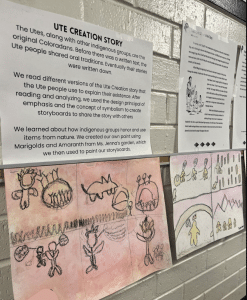
At one table during our calibration session, participants discussed a task from an elementary classroom at an arts-focused school in Colorado. In a standards-aligned lesson about local Indigenous groups, students learned about a group in their area, the Ute, and read different versions of the Ute creation story. The assessment also offered an opportunity to engage with local partners – including Pop Culture Colorado that supports storytelling through comics, the History of Colorado Center, and Ute tribal members who helped students to make their own paint with marigold for painting the comics students designed. The table group agreed that the student work samples aligned to the learning goals of identifying and analyzing main ideas, utilizing historical sources, and using principles of visual art design. The group also offered ideas for the teacher presenter of the work to consider including how to augment student choice within the task and how to encourage students to make connections between the task and future learning goals.
Another project in the session from a virtual school focused on how you know if your water is clean. As a result of looking at student work samples, the group discussed how to decide how much scaffolding was appropriate and how the assessment might be adjusted to make it more likely that students would show evidence of the standards in their final work while preserving the choice and personalization.
At yet another table, the conversation centered around the importance of creating engaging tasks – in this case a Dungeons & Dragons style game related to the periodic table – as the student work illustrated ways that students were improving their work and increasing their investment in chemistry.
By using the calibration protocol to collectively examine student work, each of these groups deepened their understanding of the target competency, identified concrete ways to foster ongoing student development of the competency, and gained insight into how their students engaged with the material, the choices they made, and the processes they followed as they learned. As the variety of assessment products students can produce to demonstrate their learning expands, these insights become more and more invaluable to educators seeking to support their students’ success.
The Future of Competency Assessment
For many educators it is daunting to think about engaging in collective review of student work due to the volume of students and competencies. However, even getting started with scoring a few pieces of student work as a professional learning community can bring awareness to the importance of shared expectations for student performance within a competency-based education system.
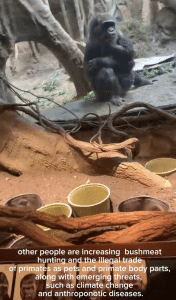
Excitingly, new, large-scale initiatives are beginning to focus on skills and competency assessment, giving educators more tools to improve and expand their approach to competency-based assessment. Moreover, the development of sophisticated AI tools has the potential to make the assessment of future-ready skills more scalable by automating individualized feedback and increasing opportunities for personalized assessment. Critical to the success of these assessments is their meaningful definition of competency constructs, ability to provide personalized feedback that supports student growth, and flexibility to meet and honor individual student and community needs.
With any assessment – externally developed, teacher-created, or fully student-driven – the process of examining student work enables educators to know how students are progressing in their learning. It’s a springboard to sharing instructional practices that teachers can use to provide meaningful feedback and support to students. Calibration ensures that we have ways to measure the essential skills and competencies central to graduate profiles and provide meaningful and relevant data to students, teachers, and families. Take the first step today by engaging your school community in a calibration session focused on your essential future-ready skills and competencies.
Learn More
- Creating a Common Language of Learning: Rubrics and Calibration
- Student Thinking Made Visible: Assessing Transferable Skills with Brief Performance Tasks
- CBE Starter Pack 2: Meaningful Assessment
 Katie Wilczak is Head of Product Learning and Design for School Assessment at Pearson. She leads Pearson’s initiatives designing and developing innovative assessments of future-ready skills. In previous positions at Gradient Learning and the Stanford Center for Assessment, Learning, and Equity (SCALE), Katie’s work focused on the instructional implications of performance-based assessment and project-based learning.
Katie Wilczak is Head of Product Learning and Design for School Assessment at Pearson. She leads Pearson’s initiatives designing and developing innovative assessments of future-ready skills. In previous positions at Gradient Learning and the Stanford Center for Assessment, Learning, and Equity (SCALE), Katie’s work focused on the instructional implications of performance-based assessment and project-based learning.
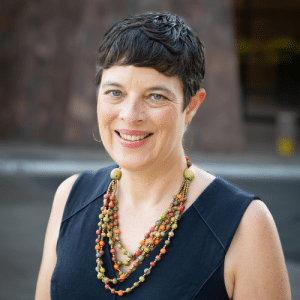 Laurie Gagnon is the CompetencyWorks Program Director at the Aurora Institute. She leads the work of sharing promising practices shaping the future of K-12 personalized, competency-based education (CBE). While working on the Quality Performance Assessment program at the Center for Collaborative Education, Laurie led many calibration and performance assessment literacy sessions.
Laurie Gagnon is the CompetencyWorks Program Director at the Aurora Institute. She leads the work of sharing promising practices shaping the future of K-12 personalized, competency-based education (CBE). While working on the Quality Performance Assessment program at the Center for Collaborative Education, Laurie led many calibration and performance assessment literacy sessions.
In past roles Katie and Laurie collaborated on the creation of the Performance Assessment Resource Bank and a pilot project implementing and calibrating deeper learning tasks across seven states.